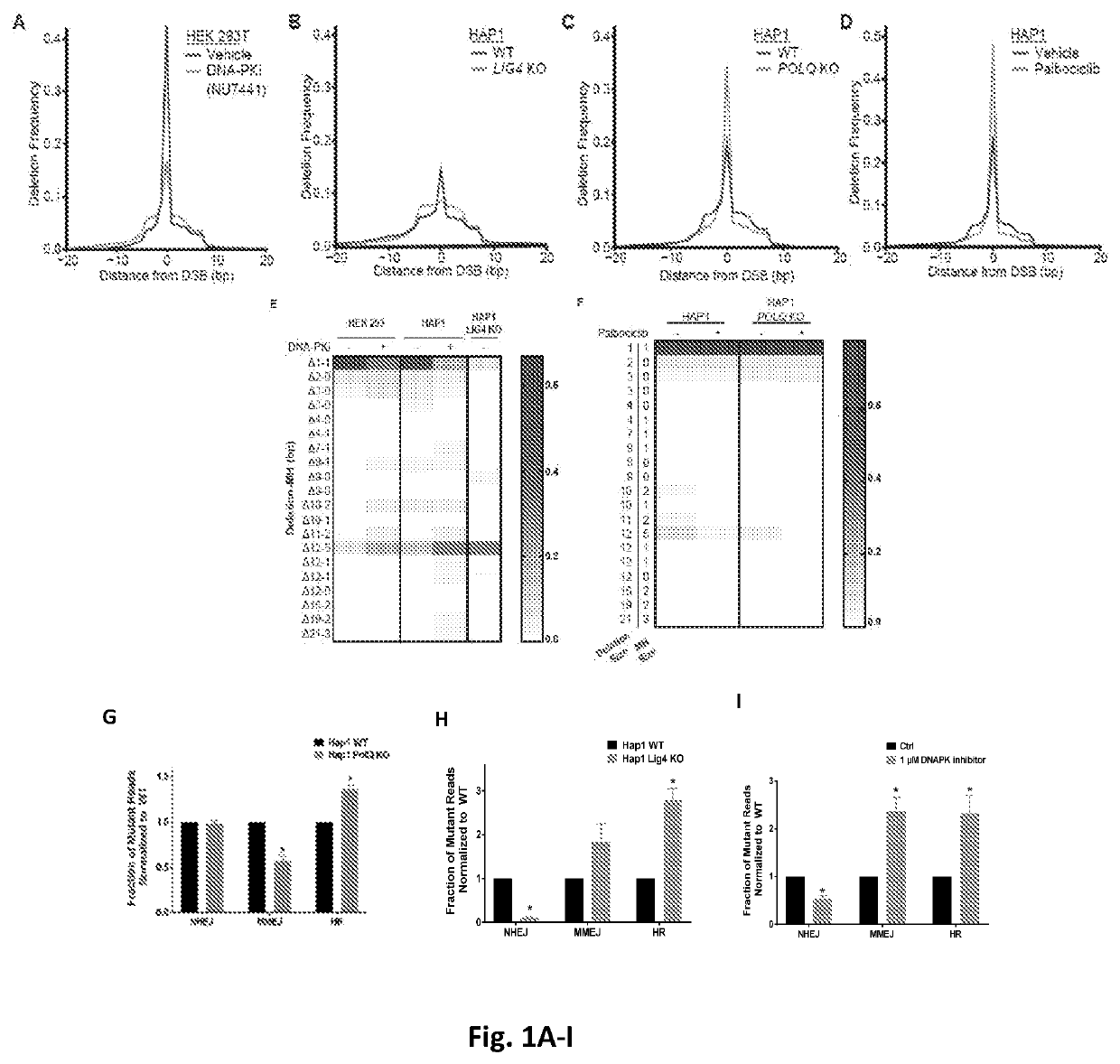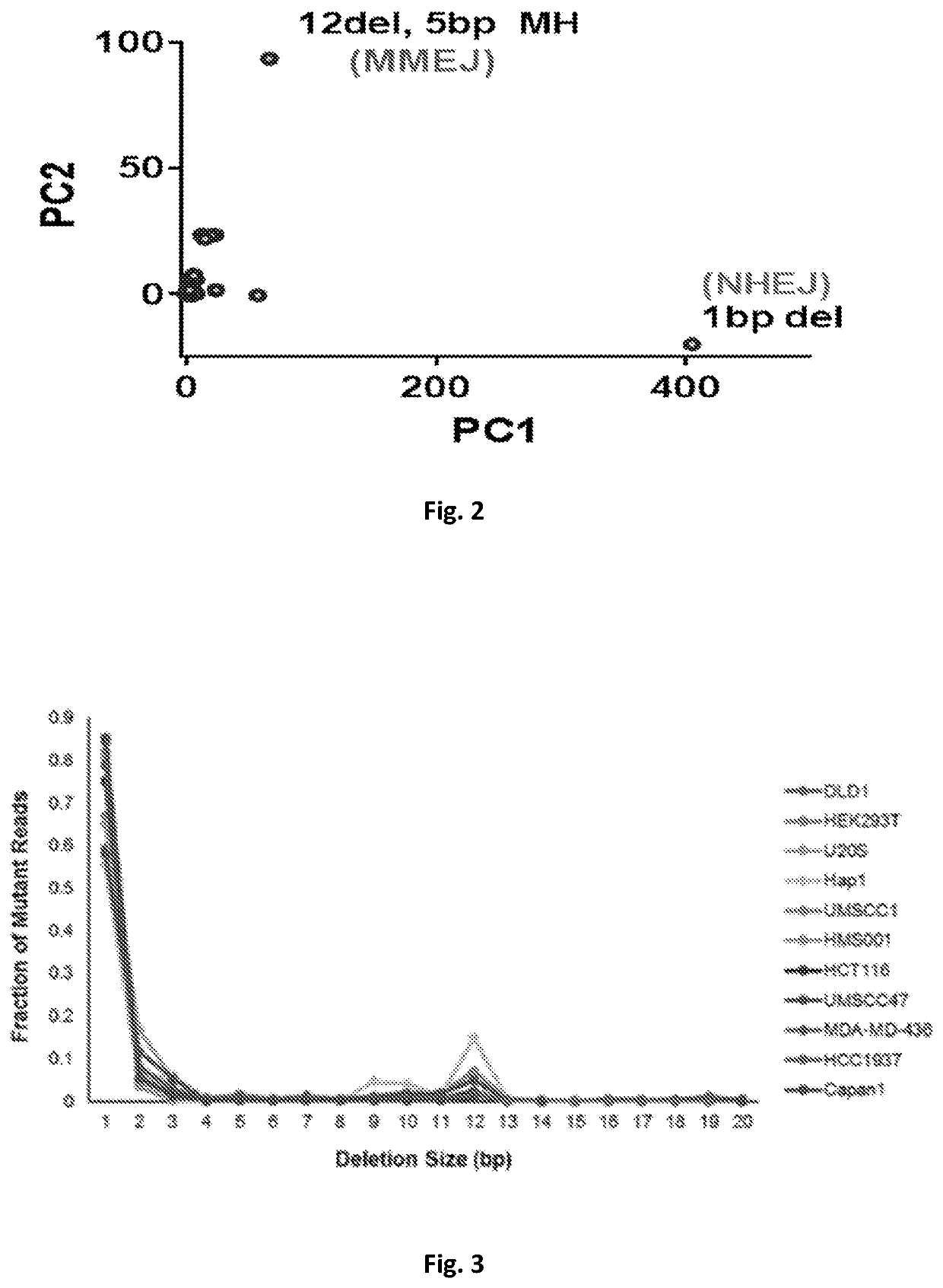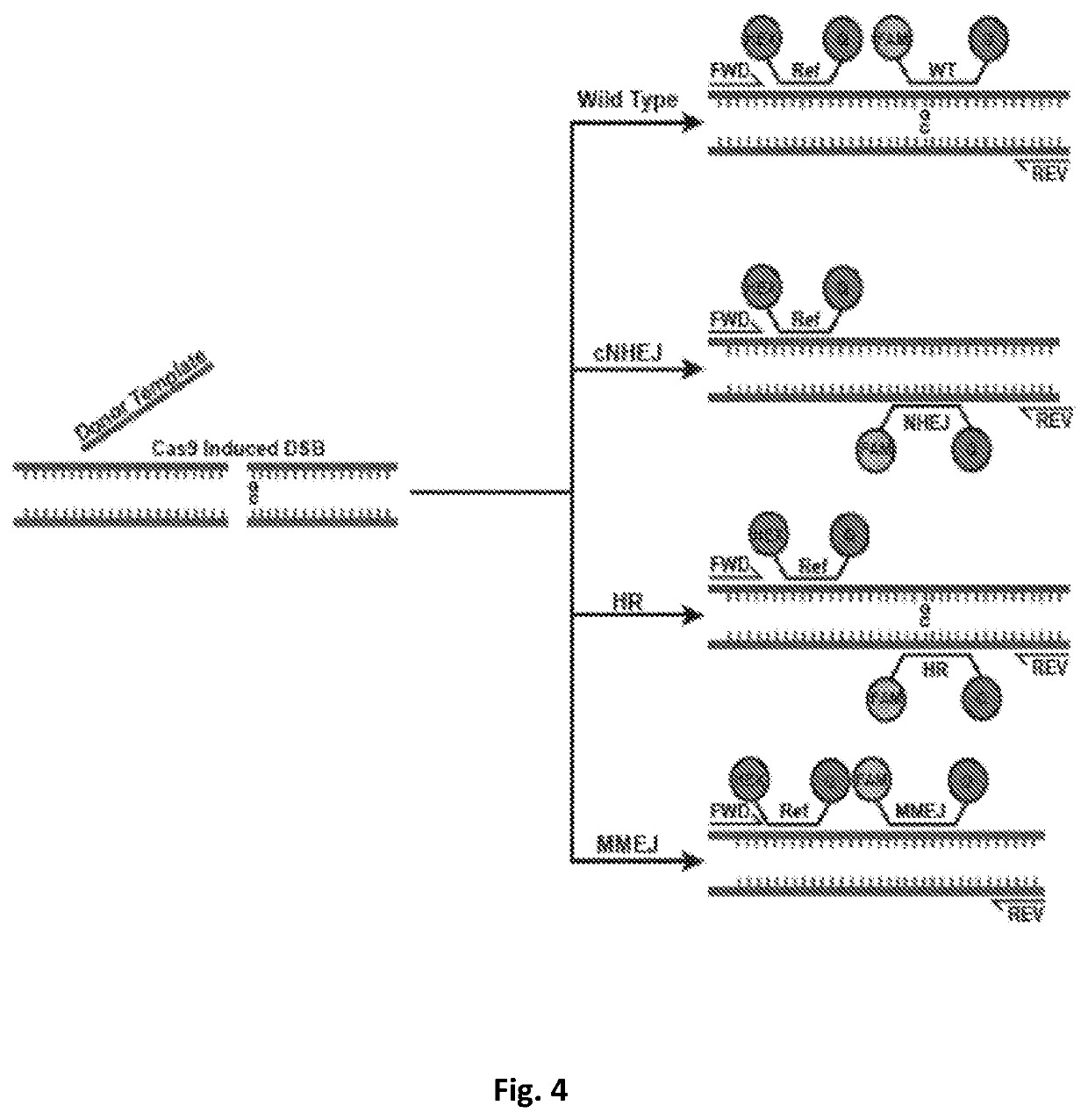Compositions & methods for monitoring DNA repair
a technology of dna repair and composition, applied in the direction of microorganism testing/measurement, biochemistry apparatus and processes, etc., can solve the problems of not being suitable for use with clinical tumor specimens, existing methods have significant limitations, and existing methods can only assess the repair by one dsbr mechanism at a tim
- Summary
- Abstract
- Description
- Claims
- Application Information
AI Technical Summary
Benefits of technology
Problems solved by technology
Method used
Image
Examples
example 1
Sequencing-Based and PCR-Based Methods for the Identification of and Analysis of Pathway-Specific DSBR Signatures
[0082]Introduction
[0083]Homologous recombination (HR) is the most important type of DNA repair during the S and G2 phases of the cell cycle, responding to DSBs created during DNA replication, and thus HR is the most important pathway for repairing damage caused by crosslinking agents (cisplatin, mitomycin C) or agents that cause DNA-protein adducts (etoposide, PARP inhibitors). Cancers with germline or acquired deficiencies in HR exhibit sensitivity to cisplatin and PARP inhibitors, a phenomenon confirmed across multiple malignancies [breast(3, 4), ovarian(5-7), and prostate(8)]. In many tumors, genetic deficiencies in HR genes can be identified, but in other tumors epigenetic silencing of BRCA1 or other unknown mechanisms confer HR deficiency(9). Biomarkers of HR deficiency include biallelic germline mutations in HR genes(9) or measurements of either genomic rearrangemen...
example 2
[0092]Sequencing-based and PCR-based methods for the identification of and analysis of pathway-specific DSBR signatures in human clinical samples
[0093]The studies described in Example 1 were performed using human cell lines. However, these methods can also be used in human clinical sample. DSBs can be generated in human clinical samples. For example, Cas9 technology has already been extensively investigated in human tissues allowing ex vivo DNA editing, such as for disorders of the blood like SCID and Fanconi anemia(27-29). Furthermore, introduction of Cas9 into patient-derived xenografts has been achieved with dissociation of tumor cells, transduction of a lentiviral particle, and short-term ex vivo culture(30-31). Thus, the present methods can be used with dissociated biopsy samples.
[0094]Tumors defective in HR are more sensitive to DNA damage that requires HR to resolve, such as DNA crosslinks formed by platinum salts or mitomycin and DNA-protein adducts formed by PARP inhibitors...
example 3
Additional Experimental Details
[0101]This example describes certain additional details, additional materials and methods, and additional results relating to the identification and analysis of pathway-specific DSBR signatures described above in Example 1 and 2.
[0102]Genome editing technologies (TALEN, Zinc Fingers, CRISPR / Cas9) use directed endonucleases to create a double strand break (DSB). Because the objective of editing is a knock-in genomic change, previous investigators have used various cell cycle perturbations(26, 27) or DNA-PKcs inhibitors(28) to bias the repair outcome towards homologous recombination over end-joining. For example, synchronizing a cell population such that editing takes place during S / G2, increases homology directed repair by 2-3 fold. The use of both NHEJ and MMEJ after a Cas9 break is indicated by the frequent presence of microhomology at breaksites(29), which are increased in the absence of key NHEJ factors or with DNA-PKcs inhibition(30, 31). Thus, it ...
PUM
| Property | Measurement | Unit |
|---|---|---|
| Time | aaaaa | aaaaa |
| Time | aaaaa | aaaaa |
| Fluorescence | aaaaa | aaaaa |
Abstract
Description
Claims
Application Information
 Login to View More
Login to View More - R&D
- Intellectual Property
- Life Sciences
- Materials
- Tech Scout
- Unparalleled Data Quality
- Higher Quality Content
- 60% Fewer Hallucinations
Browse by: Latest US Patents, China's latest patents, Technical Efficacy Thesaurus, Application Domain, Technology Topic, Popular Technical Reports.
© 2025 PatSnap. All rights reserved.Legal|Privacy policy|Modern Slavery Act Transparency Statement|Sitemap|About US| Contact US: help@patsnap.com



